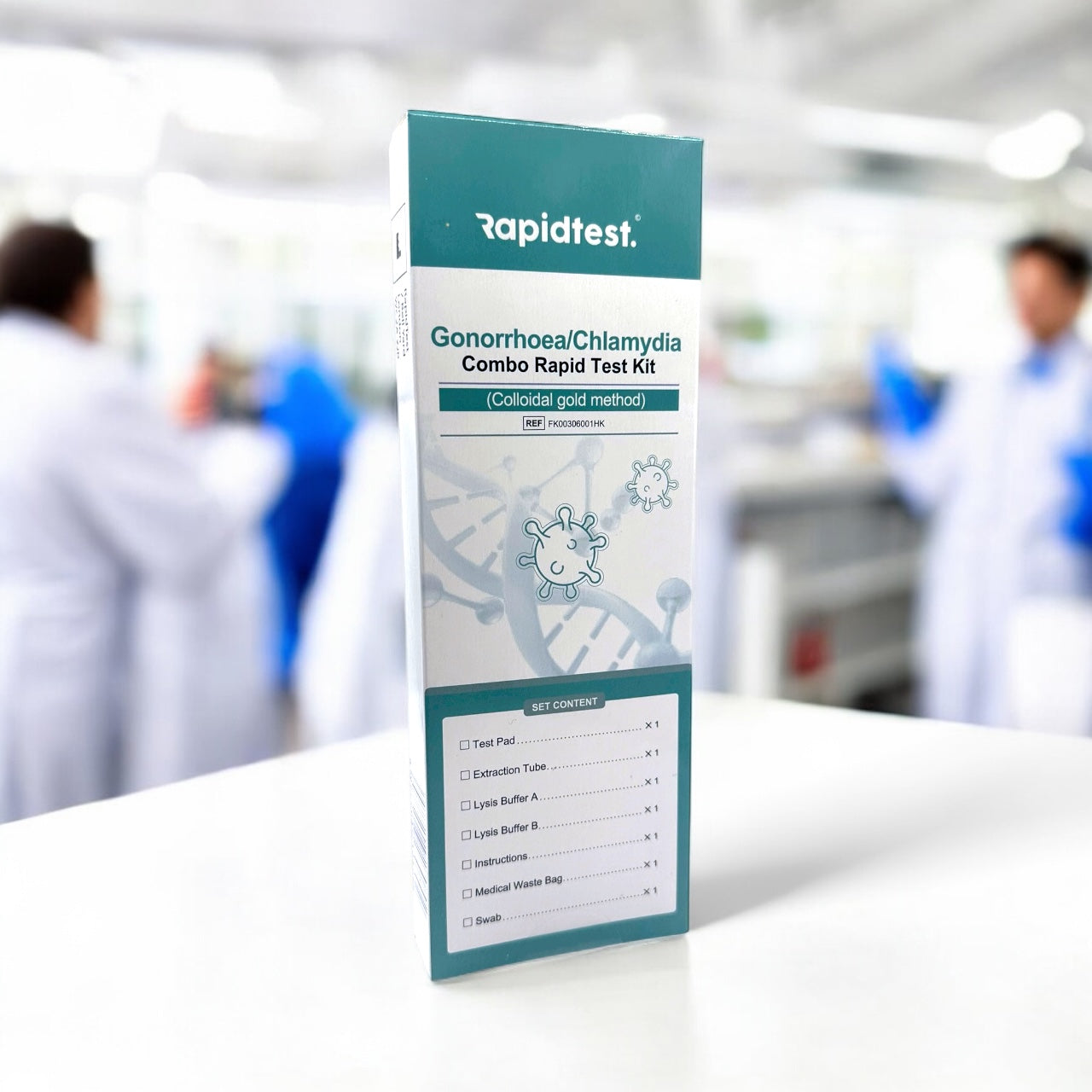
🩸 Understanding PSA Levels: What Your Results Really Mean
Share
🧠 Overview
A PSA test measures the amount of Prostate-Specific Antigen in your blood — a protein made by cells in the prostate gland.
While small amounts of PSA are normal, higher levels can signal that something may be affecting the prostate, such as inflammation, benign enlargement, or cancer.
Understanding what your results mean is the key to making informed decisions about your health.
A single high reading isn’t necessarily cause for alarm — what matters most is the pattern of change over time.
Thanks to at-home PSA Rapid Test kits, it’s now easier than ever to monitor your PSA levels regularly, discreetly, and accurately — helping you stay one step ahead of potential prostate issues.
→ How to Use a PSA Test at Home
📊 PSA Level Guide
PSA is measured in nanograms per millilitre (ng/mL). Here’s a general interpretation of your results:
|
PSA Level (ng/mL) |
Result Interpretation |
What It Means |
|
< 4 ng/mL |
Normal range |
Typical for most men. Continue regular annual testing. |
|
4–10 ng/mL |
Mildly elevated |
Could indicate benign enlargement or infection. Retest in 3 months and discuss with your GP. |
|
>10 ng/mL |
High |
Requires further investigation — schedule an appointment with your GP for follow-up testing. |
⚠️ PSA levels can fluctuate naturally — so one high result does not necessarily mean prostate cancer. Always interpret your results alongside your age, medical history, and any recent activity that might affect PSA.
Internal links:
→ Test Accuracy Explained
→ Men’s Health Test Panel
⚙️ What Can Affect PSA Levels
Several everyday factors can cause your PSA levels to rise temporarily. Being aware of these helps you avoid false results and interpret your test correctly:
- Age: PSA tends to increase naturally with age.
- Prostate enlargement (BPH): A benign condition that raises PSA but isn’t cancer.
- Recent ejaculation: Can cause a temporary PSA spike for up to 48 hours.
- Infection or prostatitis: Inflammation of the prostate elevates PSA.
- Recent exercise or cycling: Pressure on the prostate may temporarily increase PSA levels.
-
Medical procedures: Digital rectal exams or catheter use can alter results.
If any of these apply, wait a few days before testing to ensure accuracy.
🧬 Tracking PSA Trends Over Time
The most important thing to look for isn’t just one number — it’s how your PSA changes over time.
A gradual rise across several tests may indicate a developing issue, even if your result is still technically “within range.”
That’s why repeat testing is recommended:
- Retest after 3 months if your PSA is between 4–10 ng/mL.
- If your PSA is above 10 ng/mL, see your GP immediately for further evaluation.
-
Keep a log of your results (date and level) to share with your doctor.
Monitoring your PSA trend helps identify early warning signs and provides peace of mind if levels stay stable.
Internal link:
→ How Often Should You Take a PSA Test
🩺 When to Speak to Your Doctor
If you notice a significant change in your PSA level, or if it remains elevated after repeat testing, it’s time to seek medical advice.
Your GP may recommend:
- A digital rectal exam (DRE)
- An MRI scan of the prostate
-
A biopsy for confirmation
Remember, most raised PSA results are not caused by cancer — but confirming with a professional is the safest step forward.
🧪 How an At-Home PSA Test Helps
RapidTest.co’s PSA Rapid Test Kit gives accurate results in just 15 minutes using a small drop of blood from your fingertip.
It’s CE-marked, ISO-certified, and trusted by thousands of customers across the UK and Europe.
By testing regularly at home, you can:
- Track your PSA levels over time
- Identify changes early
- Reduce anxiety between GP check-ups
-
Maintain control of your health
Internal links:
→ Buy PSA Rapid Test Kit
→ Comprehensive Men’s Health Test Panel
💬 FAQs
Q1. What is a normal PSA level?
For most men, a PSA level under 4 ng/mL is considered normal, but this can vary by age.
Q2. What causes a high PSA reading?
Elevated PSA can result from prostate enlargement, infection, recent ejaculation, or prostate cancer.
Q3. Can PSA levels go down on their own?
Yes. Temporary increases can normalise once infection, inflammation, or irritation has resolved.
Q4. How often should I test my PSA?
Test annually from age 50, or every 6–12 months if you’re at higher risk.
Q5. How accurate are at-home PSA tests?
RapidTest.co’s PSA Rapid Test is CE-certified and more than 96 % accurate when used correctly.
✅ Takeaway: Knowledge is Power
Understanding your PSA levels gives you more than just a number — it gives you control over your health.
Regular testing, consistent tracking, and informed interpretation help detect potential issues early and bring reassurance when everything is stable.
With RapidTest.co’s CE-certified at-home PSA test kits, you can monitor your prostate health safely, privately, and accurately — no waiting rooms, no delays, no stress.
🛒 Order Your PSA Rapid Test Kit
📘 Learn How to Use It Step-by-Step

